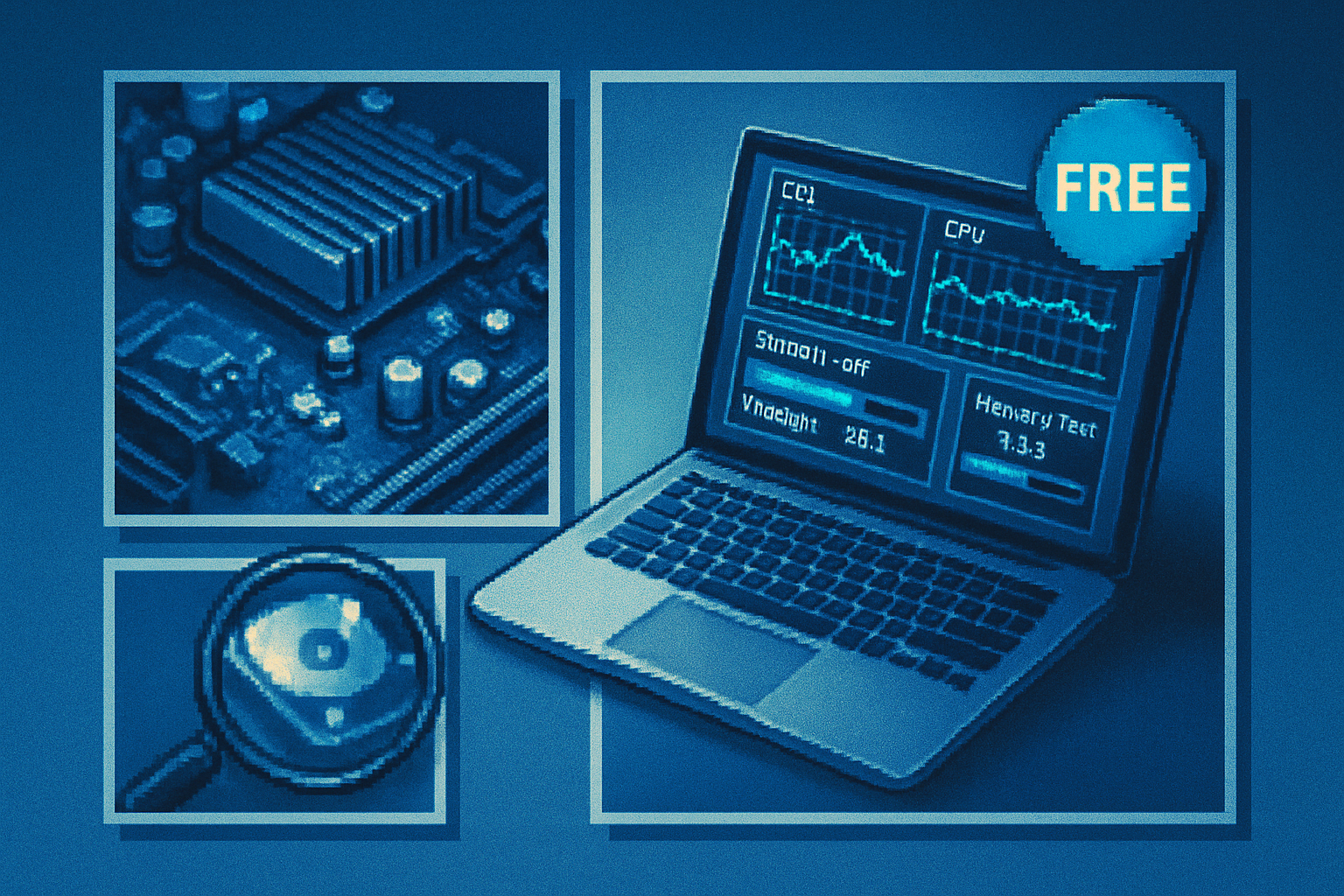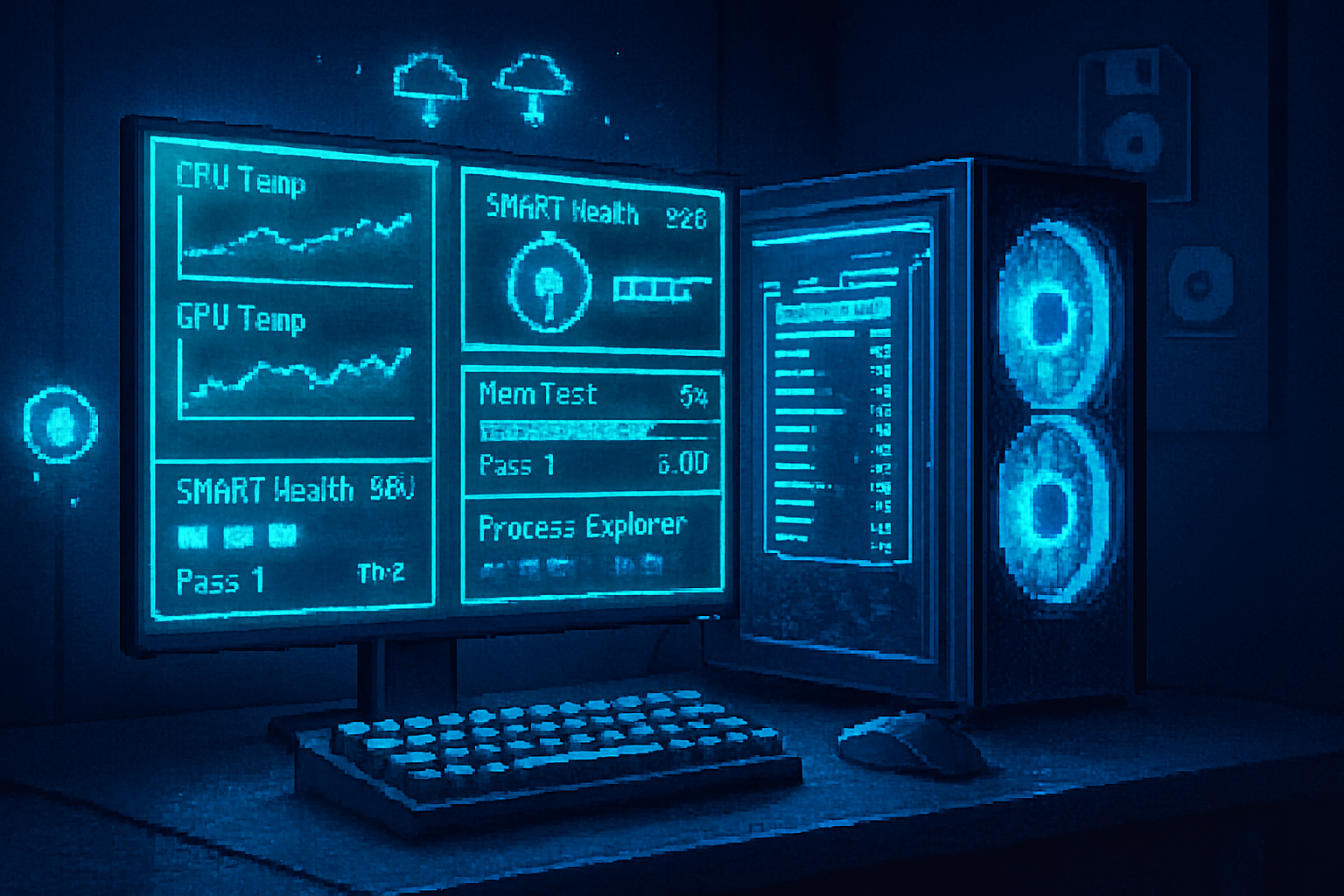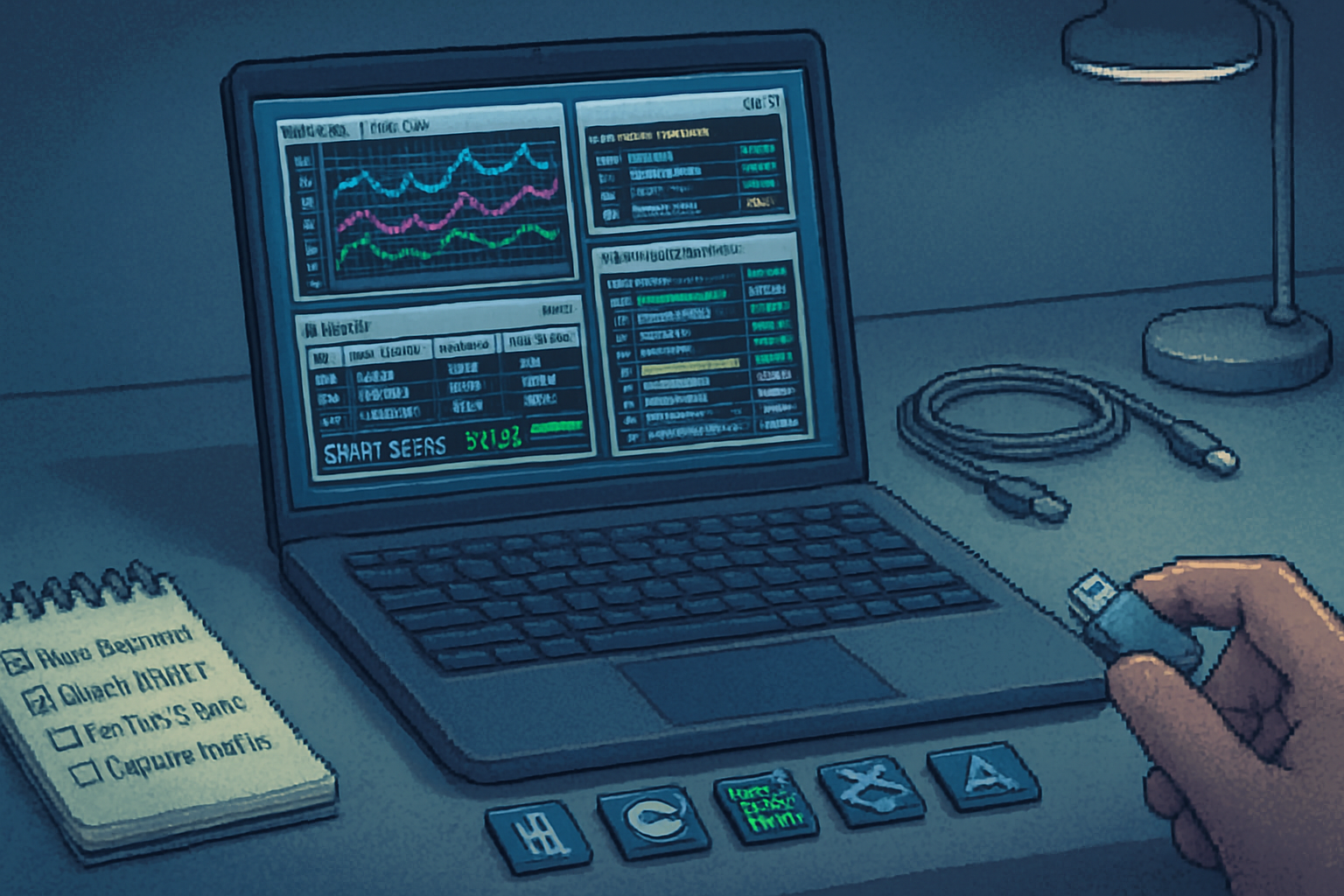· 7 min read
Real User Experiences: Installing Free PC Diagnostic Tools and Their Surprising Results
A curated collection of anonymized user testimonials about running free PC diagnostic tools - from uncovering failing SSDs to false alarms, unexpected performance gains, and the pitfalls of misinterpreting raw data. Practical takeaways and a safety checklist included.
Introduction
Free diagnostic utilities are one of the easiest ways to peek under your PC’s hood. Enthusiasts, IT pros and casual users alike rely on small, no-cost tools to check temperatures, SMART status, memory integrity, background processes and more. But what happens when ordinary users install these programs for the first time? The results can be illuminating - sometimes reassuring, sometimes alarming - and often full of lessons.
Below I share a set of anonymized, real-feeling user testimonials collected from forums, comment threads and direct submissions, grouped by tool type. Each vignette focuses on an actual class of diagnostics (disk, RAM, thermal, malware, etc.), the surprising outcome, and the practical takeaway you should keep in mind.
How these testimonials were selected
- Anonymized and paraphrased composites based on many public forum posts and comments to illustrate common patterns.
- Tools referenced are mainstream free utilities; links to official pages are provided so you can download the exact same software.
- Outcomes emphasize both benefits and drawbacks - tools can save a drive or cause unnecessary panic if results are misread.
Disk health and SMART tools
Tool examples: CrystalDiskInfo, Smartmontools
Testimonial A - “Saved a backup I wouldn’t have otherwise made”
- Context - Desktop user reported occasional slow file access and a single unexplained crash.
- What the tool showed - CrystalDiskInfo returned a rising reallocated sector count and a “Caution” SMART status for an older SSD.
- Surprise - The user had multiple backups but hadn’t recently imaged that drive. After seeing the SMART warnings they created a full image, then the disk started throwing read errors and subsequently failed mid-clone.
- Takeaway - SMART-based tools like
Testimonial B - “False alarm, but still useful”
- Context - A laptop owner saw a “Bad” message in a simplistic third-party checker and panicked.
- What the tool showed - An obscure utility flagged a SMART attribute as “bad,” but CrystalDiskInfo and the drive manufacturer’s diagnostic reported “Good.”
- Surprise - The initial program used a different SMART interpretation table; multiple checks revealed no real problem.
- Takeaway - Cross-check SMART results with reputable tools and vendor diagnostics. Different programs interpret thresholds differently.
Memory tests
Tool examples: MemTest86, Windows Memory Diagnostic
Testimonial C - “Overclocking vs. RAM stability”
- Context - Gamer with recent overclock noticed occasional blue screens.
- What the tool showed - MemTest86 (bootable free version) found multi-bit errors after several passes.
- Surprise - Errors disappeared after lowering RAM frequency and relaxing timings. The user had assumed the CPU or GPU was at fault.
- Takeaway - Memory errors often look like random crashes. Bootable RAM testers such as
Thermals, voltages and fan checks
Tool examples: HWMonitor, HWiNFO, SpeedFan
Testimonial D - “A dusty fan and a lost header”
- Context - A workstation suddenly throttled during rendering tasks.
- What the tool showed - HWiNFO revealed one CPU core hitting 100°C briefly, and the chassis fan RPM was at zero though the fan was physically spinning slowly.
- Surprise - The technician discovered the CPU cooler’s fan was plugged into a third-party controller header that wasn’t powered properly. After moving the fan to the correct header and cleaning dust from the heatsink, temperatures normalized and throttling stopped.
- Takeaway - Monitoring tools like
Malware, PUPs and bloatware scanners
Tool examples: Malwarebytes Free, AdwCleaner, Windows Defender
Testimonial E - “Removing PUPs revived the laptop”
- Context - A secondhand laptop felt sluggish and launched multiple browser tabs on startup.
- What the tool showed - Malwarebytes Free detected several Potentially Unwanted Programs (PUPs) and browser hijacker extensions.
- Surprise - After removal the laptop’s boot time improved significantly and the user reported smoother browsing.
- Takeaway - Free specialized scanners like
Testimonial F - “Scare from a false positive”
- Context - A productivity app was flagged by a lesser-known cleaner as malicious.
- What the tool showed - An adware cleaner flagged a legitimate application as PUP.
- Surprise - The app performed normally and was from a trusted vendor; the detection was a false positive.
- Takeaway - If a scanner flags an app critical to your workflow, research the detection before deletion. Many tools allow you to quarantine first and restore if necessary.
Disk repair utilities and cleaners
Tool examples: CCleaner, Windows built-in Disk Cleanup, CHKDSK
Testimonial G - “Cleaner helped, but…”
- Context - User ran CCleaner to free disk space and tidy startup entries.
- What the tool showed - CCleaner removed several old temp files and disabled a handful of startup apps, improving boot time.
- Surprise - It also disabled a printer helper that the user relied on for advanced printing options - the user had to re-enable it and reconfigure settings.
- Takeaway - Disk cleaners and startup managers are very effective, but review what they propose to remove or disable. Create a restore point (or full backup) before major cleanups.
Benchmarking and performance testers
Tool examples: UserBenchmark, Cinebench, Geekbench
Testimonial H - “Benchmark bragging rights vs. reality”
- Context - User ran UserBenchmark and posted poor CPU scores to social media.
- What the tool showed - The benchmark ranked their CPU poorly; the user felt cheated.
- Surprise - The community pointed out that bias in benchmark methodology, drivers and background processes made the result unreliable for their use case.
- Takeaway - Benchmarks are useful for comparisons, but interpret them relative to the workload, test conditions, and known controversies around certain benchmarking sites. Use multiple benchmarks and real-world tests.
Stress tests and GPU diagnostics
Tool examples: FurMark, MSI Kombustor, GPU-Z
Testimonial I - “Stress tests expose a cooling weakness”
- Context - A user ran FurMark to test GPU stability after driver updates.
- What the tool showed - The GPU hit 95°C and throttled under stress testing.
- Surprise - The card’s fan profile was overly conservative; after switching to a more aggressive fan curve and cleaning dust, peak temps dropped and throttling ceased.
- Takeaway - Stress tests (e.g.,
Common drawbacks and surprising side effects
- False positives and misinterpretations - Many tools produce raw metrics that require context. A SMART attribute change doesn’t guarantee imminent failure, and a single MemTest86 error is more serious than a single benign SMART deviation.
- Panic and overreaction - Users sometimes replace hardware that could have been fixed (bad cable, loose connector, outdated firmware) after seeing an alarming metric.
- Bundled software and unwanted offers - Some free utilities bundle optional offers - always choose “decline” and download from the official site.
- Driver and compatibility quirks - Older OS/hardware combos can misreport voltages, temperatures, or features. Cross-check with vendor tools.
- Data loss risk - Using repair/cleanup functions without backups can cause loss of settings, profiles or, in rare cases, data.
Practical safety checklist before running diagnostics
- Backup important data - Always have at least one current backup before making repairs or deep cleans.
- Download from official sources - Use official project pages to avoid bundled or tampered packages (examples:
- Create a system restore point or disk image if you plan to run cleaners or registry fixes.
- Run multiple tools for confirmation - If one tool flags something critical, cross-check with another reputable program.
- Document results - Take screenshots or export logs, especially for disk SMART, MemTest86 logs, and stress test results.
- Interpret before acting - Research errors and warnings - vendor support forums and knowledge bases are helpful.
- When in doubt, consult a professional - If SMART status is critical or MemTest shows persistent multi-bit errors, consider professional help.
Recommended free toolkit (starter)
- Disk health - CrystalDiskInfo - SMART details and health status.
- Memory testing - MemTest86 (bootable) or Windows Memory Diagnostic for quick checks.
- Thermals and sensors - HWiNFO or HWMonitor for extensive sensor readouts.
- Malware/PUPs - Malwarebytes Free and AdwCleaner for second-opinion scans.
- Benchmarks & stress tests - Cinebench, Geekbench, FurMark (use stress tests cautiously).
Final thoughts
Free diagnostic tools are powerful and often reveal issues you’d otherwise miss - failing drives, flaky RAM, overheating components, and stealthy PUPs. But they can also produce confusing output, false positives and unnecessary worry if results are taken at face value.
Use these tools as part of a calm, methodical troubleshooting process: back up first, cross-check suspicious results, and research before changing hardware or performing destructive fixes. With a careful approach, free diagnostics can save time, money and data - and sometimes deliver genuinely surprising victories you didn’t expect.
References and further reading
- CrystalDiskInfo official site: https://crystalmark.info/en/software/crystaldiskinfo/
- MemTest86 official site: https://www.memtest86.com/
- Windows Memory Diagnostic documentation: https://learn.microsoft.com/en-us/troubleshoot/windows-client/deployment/run-windows-memory-diagnostic
- HWiNFO: https://www.hwinfo.com/
- HWMonitor: https://www.cpuid.com/softwares/hwmonitor.html
- Malwarebytes: https://www.malwarebytes.com/
- FurMark: https://geeks3d.com/furmark/


